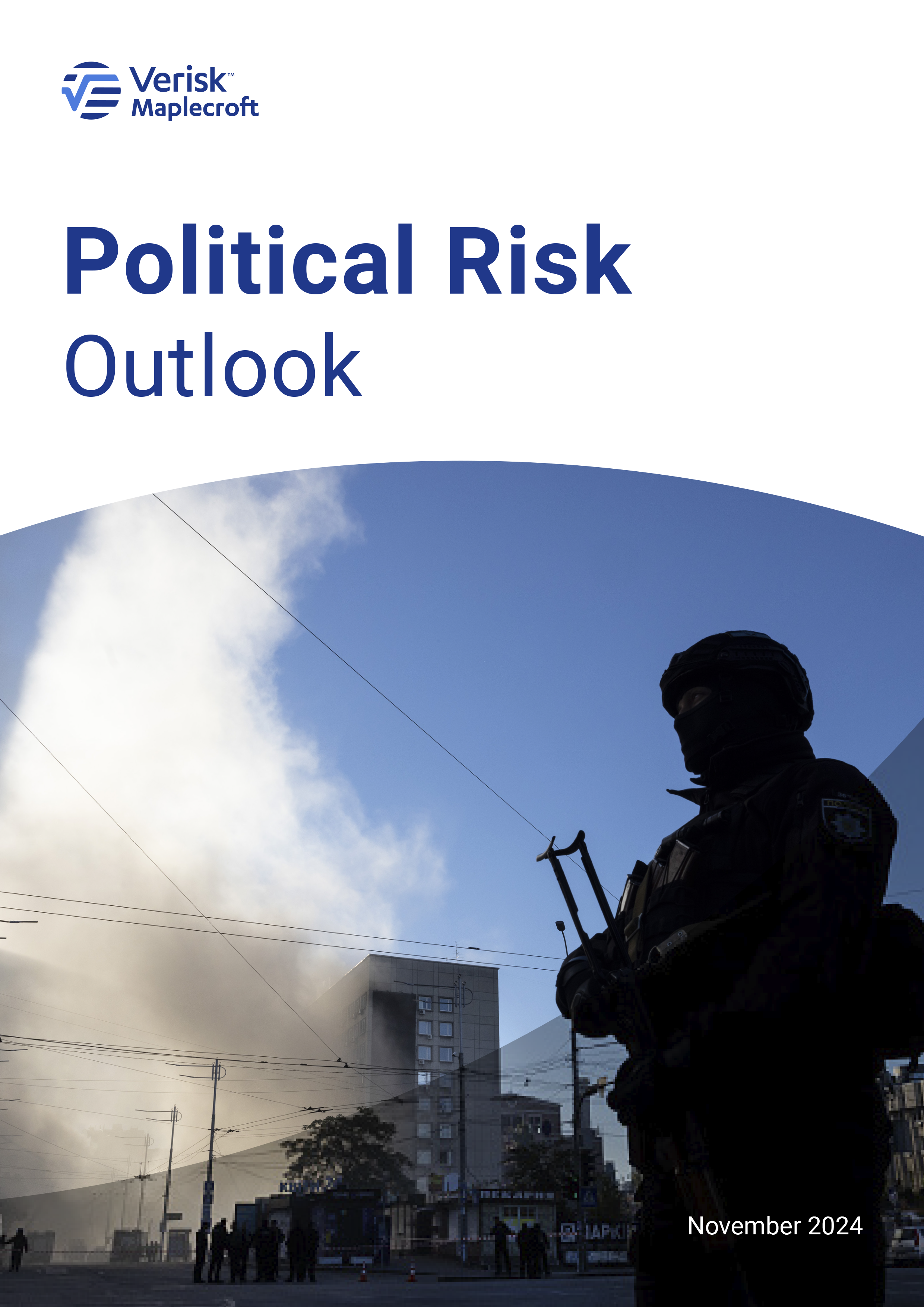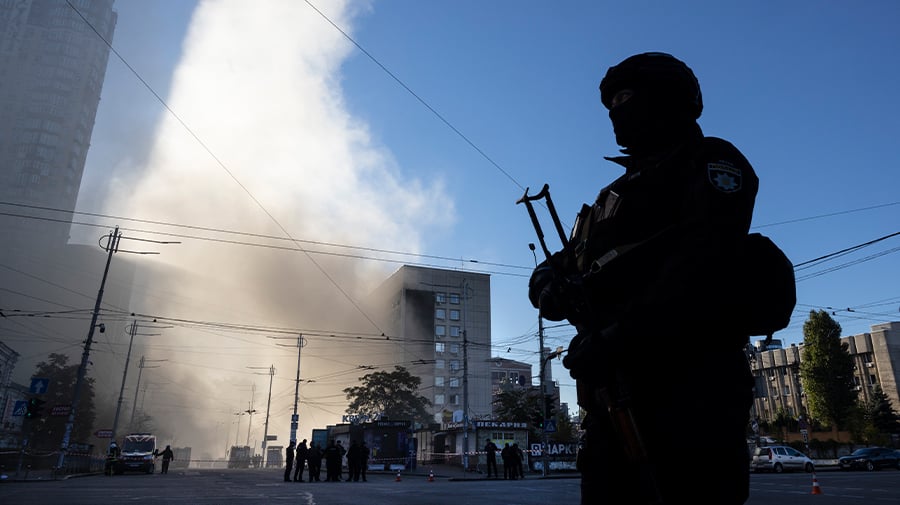The world has become less predictable. Traditional alliances and geopolitical battlegrounds are evolving as a wave of strategic competition drives uncertainty for global business. From geopolitics and conflict to elections and trade, our data shows that the international system is heating up and creating a new risk baseline for multinational organisations across the world.
The current dynamics demand innovative approaches to understanding where risks lie and how they might develop in the future. In the latest edition of our Political Risk Outlook, we draw on our unique portfolio of country risk data, alongside analysis from our team of experts, to strip back the complexity of some of the key global issues driving the risk environment for international business.
Shifts over the past three years in the 64 risk indices that make up our Political Risk Data provide important signals that companies and investors need to pay close attention to as we enter 2025. Our Political Risk Index identifies 99 countries that have witnessed a significant rise in risk. Digging deeper, we also see similar trends emerge across a range of other factors. As the chart below shows, these include issues as wide-ranging as civil unrest, conflict, challenges to government authority, ease of trade, interstate tensions, resource nationalism and sanctions.
These shifts have defined the topics we examine in this year’s Political Risk Outlook. The common theme is that geopolitics is, and will continue to be, the defining feature shaping the global risk landscape for business. Within the report, we delve into some of these issues in greater detail, including: conflict, the exposure of markets and key industries to heightened geopolitical tensions, and the impact of strategic global competition on protectionism, trade, resource nationalism and the cost of doing business.
But before we do that, we’ve used our Political Risk Data to take stock of the current state of play, where we might be headed and what some of these risks mean for global business.
Democracy and unrest
Donald Trump’s sweeping victory in the US presidential election marked the near-end point of the 2024 ‘election supercycle’, in which 77 countries representing half the global population went to the polls. The robustness of the US electoral system stood up to the test on 5 November, but an indicator of our Democratic Governance Index that assesses voting processes shows that nearly half of the countries holding elections this year experienced procedural irregularities in their most recent polls. The use of violence and intimidation was also observable in a fifth of the countries we assessed.
With a multitude of new governments taking office in 2024 and into 2025, a key question for businesses will be whether new and incumbent governments can maintain a stable operating environment. This risk will be particularly relevant in countries such as the US, Mexico and Sri Lanka, where new administrations come into office with high expectations and short honeymoons. This could pave the way for both growing divisions and mounting frustration among the electorate – which could potentially spill over onto the streets.
A growing risk of widespread protests will affect twice as many countries as those where unrest will recede in 2025, according to data from our predictive Civil Unrest Index. During 2024, all regions witnessed major civil unrest events, from Kenya to Bangladesh and New Caledonia to the UK, to name but a few. This reinforces a clear long-term trend over the last five years of more frequent civil unrest events.
Although the number of major elections will fall sharply in the year ahead, 2024 has been a reminder that these aren’t necessarily strong predictors of disruptive civil unrest. Less than 10% of major elections during the first 10 months of 2024 sparked major unrest.
Trade as a battleground
The role of international trade as a geopolitical battleground will likely intensify in the next four years after Trump takes the helm as US president. Based on his rhetoric during the campaign, we expect his administration to impose tariffs at levels not seen since the 1930s.
While the outcome is far from certain, if imposed, import tariffs of up to 20% on all countries – and a higher rate of 60% for China – could upend international trade, place further pressure on splintering globalisation and drive inflation in the US. Countries without free trade agreements would be particularly affected. The most exposed in terms of US import values are China, Germany, Japan, Vietnam, Taiwan, Ireland, India, Italy, the UK and Thailand.
Businesses will look to insulate operations and supply chains from geopolitical tensions. However, companies seeking to diversify into connector markets, such as Mexico and Vietnam, and other emerging economies will face a different and less familiar set of political risks in these new countries of operation. As Figure 3 shows, political risk within a number of these important markets is on the rise.
No end in sight for key conflicts
What is sure is that interstate tensions and conflict will set the stage for a more challenging business environment across both emerging and developed economies.
Corporates and investors must be ready for increased risk across multiple domains. Our data shows that since 2021, 46 countries have experienced a significant increase in risk on our Exposure to Regional Conflict Index, while 27 witnessed a similar rise on our Conflict Intensity Index. Supply chains and operations across the Middle East, sub- Saharan Africa, South America, and South-East Asia are exposed to major disruption risks as a result.
A key risk dynamic we will be tracking closely in 2025 is the trajectory of the conflicts in the Middle East and Ukraine. The outlook for conflict in the Middle East is negative, as underscored by the fact that six of the highest 12 risk pairings on our Interstate Tensions Model involve at least one country from the region. Although unlikely for now, there is a risk that tit-for-tat attacks between Iran and Israel escalate into a broader regional war that drags in the Gulf States and the United States more directly.
Trump’s return to the White House points to a major shift in US policy towards the war in Ukraine. His pledge to ‘solve’ the conflict could result in President Zelensky being pressured into accepting a ceasefire or losing US military and financial support. Such a scenario would reduce the intensity of conflict in Ukraine and Russia substantially. But a ceasefire that is forced upon Kyiv risks creating a frozen conflict that is susceptible to regular flare-ups. In addition, this would do nothing to deter authoritarian leaders from deploying military force elsewhere in pursuit of political aims that could trigger new waves of security, sanctions, cyber, supply chain and reputational risks for multinational businesses.
Geopolitics major theme to watch in year ahead
With 73 countries experiencing a significant rise in risk on our Interstate Tensions Model over the past five years, the tone is set for greater instability and challenges in doing business globally.
As we try and understand how the global risk environment will develop in the months and years ahead, it is the key themes of geopolitics, trade and conflict we will explore in greater depth throughout this year’s Political Risk Outlook.





